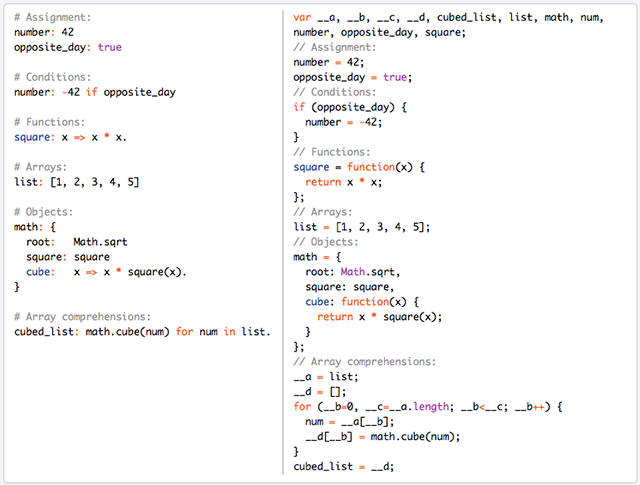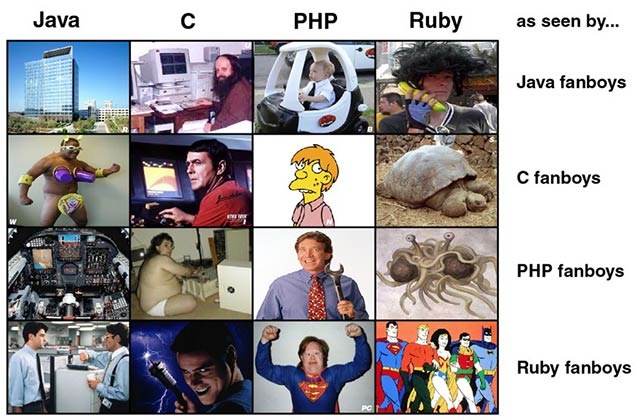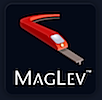 CoffeeScript (GitHub repo) is a new programming language with a pure Ruby compiler. Creator Jeremy Ashkenas calls it “JavaScript’s less ostentatious kid brother” – mostly because it compiles into JavaScript and shares most of the same constructs, but with a different, tighter syntax.
CoffeeScript (GitHub repo) is a new programming language with a pure Ruby compiler. Creator Jeremy Ashkenas calls it “JavaScript’s less ostentatious kid brother” – mostly because it compiles into JavaScript and shares most of the same constructs, but with a different, tighter syntax.
Interesting trivia: Jeremy was inspired to create CoffeeScript based on code he saw while reading Create Your Own Programming Language by Marc Andre Cournoyer!
To get a feel for the language, check out this example code (CoffeeScript on the left, resulting JavaScript on the right):

As a Ruby project, you can get the CoffeeScript compiler installed with a simple gem install coffee-script or check out the code from/on GitHub. Read More








 Overt humor isn’t usually Ruby Inside’s thing, but it’s the holiday season, so there’s nothing wrong with kicking up your heels and having a little fun. Don’t worry – this won’t become a habit. Promise! After the fold, check out a chart showing how programming language fanboys (Ruby’s included) see each other’s respective languages.
Overt humor isn’t usually Ruby Inside’s thing, but it’s the holiday season, so there’s nothing wrong with kicking up your heels and having a little fun. Don’t worry – this won’t become a habit. Promise! After the fold, check out a chart showing how programming language fanboys (Ruby’s included) see each other’s respective languages.


 I love checking out new Ruby libraries, and recently many new ones have passed my eyes. The most prominent releases get their own post on Ruby Inside, but often there are less significant libraries that I’d struggle to write 100 words about yet still contribute to Ruby’s lifeblood. This post aims to round up a selection of my recent discoveries.
I love checking out new Ruby libraries, and recently many new ones have passed my eyes. The most prominent releases get their own post on Ruby Inside, but often there are less significant libraries that I’d struggle to write 100 words about yet still contribute to Ruby’s lifeblood. This post aims to round up a selection of my recent discoveries. It’s long been a bone of contention in the Ruby world that Ruby, as a programming language, doesn’t have an official spec (though
It’s long been a bone of contention in the Ruby world that Ruby, as a programming language, doesn’t have an official spec (though  Uh oh, it’s upgrade time again. Today, the official Ruby 1.9 maintainer (Yuki Sonoda, a.k.a. Yugui) announced
Uh oh, it’s upgrade time again. Today, the official Ruby 1.9 maintainer (Yuki Sonoda, a.k.a. Yugui) announced  Much of Merb’s momentum has been merged into Rails 3, but one-time Engine Yard developer Daniel Neighman has found himself moving in a new direction, inspired by what they had once achieved with
Much of Merb’s momentum has been merged into Rails 3, but one-time Engine Yard developer Daniel Neighman has found himself moving in a new direction, inspired by what they had once achieved with 

 Have you ever yearned for something like Rails’s script/console or Merb’s merb -i in your other Rack based apps? If so, then
Have you ever yearned for something like Rails’s script/console or Merb’s merb -i in your other Rack based apps? If so, then 

